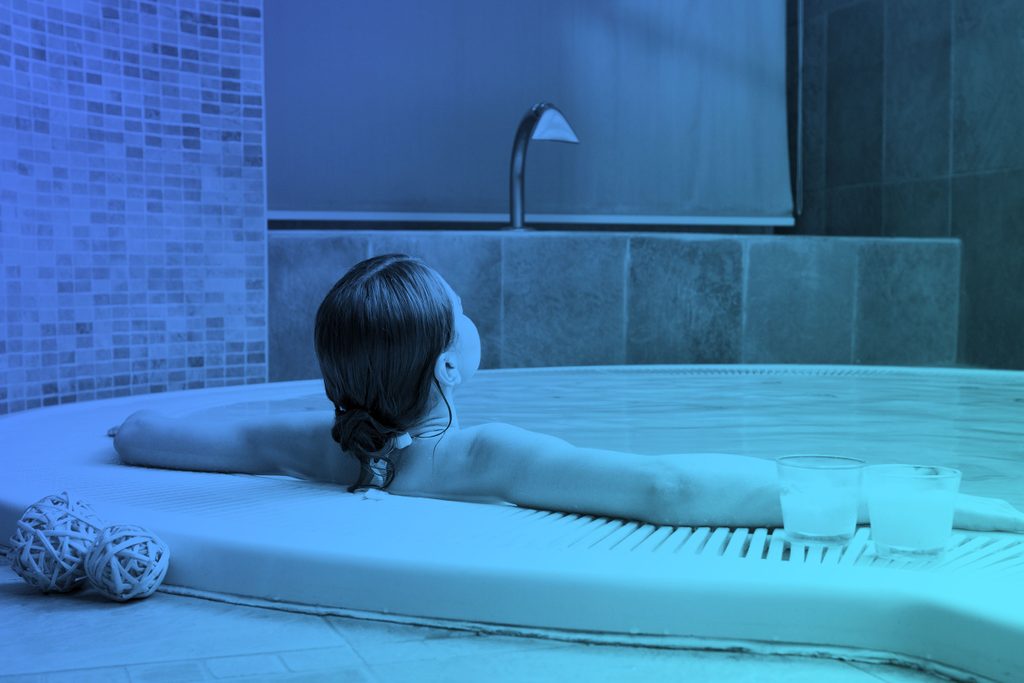Hydrotherapy: The Benefits of Healing Through Water
Updated: Aug. 01, 2016
Water therapy treatments can help with a whole slew of health problems, including hemorrhoids and rheumatoid arthritis.

Water therapy, or hydrotherapy, has long been used to treat disease and pain. There are many references to the healing uses of water, especially hot mineral springs and sea water, in ancient Hindu, Chinese, and Native American teachings. Some springs, such as Lourdes, have been considered miraculous. At the basis of the hydrotherapy philosophy is the idea that water is the essence of life and a major part of the human body.
How Hydrotherapy Works
Modern hydrotherapy treatments stem from the 19th century and the work of Father Sebastian Kneipp, a Dominican monk. He founded one of the first health farms in Europe. The spa was located near a water source that was rich in sulfur, which helped with skin problems, arthritis and rheumatism. Kneipp’s definitive “water contrast therapy,” is still used today and involves alternating between hot and cold baths. Hot water draws blood to the surface, activating sweat glands and eliminating toxins. Cold water drives blood away from the surface and has an invigorating effect. Alternating hot and cold water baths can reduce inflammation and stimulate blood flow and lymphatic drainage.
Hydrotherapy can involve bathing in natural springs, which may have water with special qualities, doing exercises in a hydrotherapy pool, or simply taking a shower, bath or sitz bath (a small basin that you sit in with legs dangling outside so that the water covers only your lower abdomen, groin and upper thighs). Water for hydrotherapy can be supplemented by the addition of oils, salts, mud, volcanic rocks or seaweed (known as thalassotherapy from the Greek thalassa, meaning “sea”) as well as pressure provided by jets or a therapist.
Naturopaths and physiotherapists have takenup many of Kneipp’s ideas to treat all manner of ailments. For example, hot-and-cold water treatments may be used to improve circulation in the digestive area; sitz baths are useful for problems in the pelvic region or hemorrhoids; sprays of hot water and whirlpool spa baths may have a beneficial effect on back, joint or period pain.
A Visit to the Hydrotherapist
A naturopath or physiotherapist may refer you for specific hydrotherapy treatments, depending on the disorder. Treatments are readily available at natural hot springs and in health retreats and spas. You can also practice hydrotherapy simply at home, for example with an Epsom salts bath, which induces perspiration and is useful for rheumatic conditions, colds and flu.
Safety First
Tell your practitioner if you are pregnant and mention any medical condition you have and other treatments or medicines you are taking.
Where to Find Hydrotherapy Treatments
Many health retreats offer hydrotherapy treatments. Physiotherapists may recommend treatments that are carried out in rehabilitation clinics or swimming pools.

Get More Natural Remedies Doctors Approve!
The book Doctors’ Favorite Natural Remedies offers effective ways to treat more than 85 health conditions and evaluates the most commonly used alternative therapies and supplements. Learn more and buy Doctors’ Favorite Natural Remedies here.